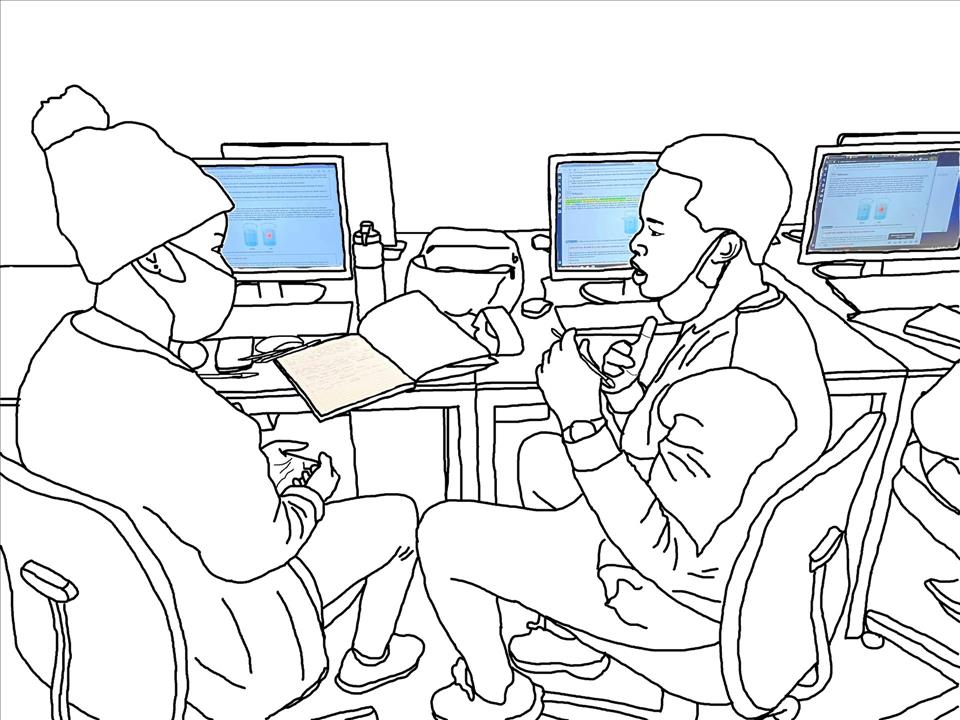
Digital Textbooks Expand Learning For Engineering Students - South African Study
In poorer, less resourced and connected countries like South Africa, this divide is not merely a matter of who has access to digital devices and who doesn't. It's also about whether students are digitally literate. This is about more than merely navigating digital devices and platforms. It's also about being able to think and evaluate information critically and to creatively use technology in problem-solving.
Universities and other educational institutions need to urgently integrate digital literacy training into their curricula. Students need to become familiar with the technical aspects of digital tools and develop the mindset to use these tools for learning, research and innovation.
So, how can this be done? My PhD in engineering education research centred on how novice engineering students at a South African university of technology use e-textbooks to develop digital literacy skills. My findings suggest that e-textbooks could make engineering education more inclusive and engaging. Students found the e-textbooks' features helpful for grasping complex engineering concepts. This, in turn, enhanced their conceptual understanding.
This suggests it's a good idea to integrate e-textbooks into engineering education in South Africa. It's not enough to focus on the technological aspects, though. There must also be a concerted effort to address the socio-economic and educational barriers that students face.
What the study foundE-textbooks are becoming an increasingly integral part of university education around the world. These digital resources conveniently give students access to learning materials from any location at any time. They are also cheaper than paper textbooks.
E-textbooks are interactive, with embedded multimedia elements and quizzes. This caters to diverse learning styles, making study sessions more engaging and effective. The ease of updating digital content also ensures that students have the latest information. That's a big advantage in rapidly evolving fields such as engineering.
Unlike traditional textbooks, e-textbooks can include interactive elements that encourage students to work with their peers.
Features such as shared annotations, discussion forums and interactive exercises can make them a dynamic platform for collaborative learning. This enriches the learning experience and fosters a sense of community among students, a critical factor in educational success .
I invited first-year students at a South African university to participate in my study. A total of 73 students from two engineering departments – Chemical Engineering and Maritime Studies – responded to the survey.
I then selected 14 participants for a qualitative in-depth investigation. They engaged in individual and group reading activities. These sessions were followed by interviews. The students offered insights into their understanding and previous practices with digital texts. They also told me how they used the prescribed e-textbook.
It became evident that students were not mere passive consumers of information. Some adopted emerging digital literacy practices. They navigated the e-textbooks easily, using hyperlinks for quick access to previous chapters and revision. They watched embedded videos to grasp complex concepts. They used emojis to annotate and personalise their readings and the highlighting feature to emphasise crucial points.
Others engaged more superficially with the content. In these instances, students simply read the text and viewed the illustrations, much as they'd use paper books. This can likely be explained by the fact that many students, especially those coming from rural areas or under-resourced schools in South Africa, might have limited exposure to digital devices and technology before entering university. Students not accustomed to using digital devices would take time to adjust.
I also found that many students weren't using the e-textbook's collaborative functions – even though they told me during discussions that they recognised collaborating could be valuable. One student suggested:
Increasing inclusivityMy findings suggest that e-textbooks could make engineering education more inclusive. These digital resources can help create an environment where students from diverse backgrounds, with varying abilities and learning preferences, can learn effectively.
For example, a student with dyslexia might find traditional textbooks challenging. The different modes that an e-textbook uses to provide content, such as video explanations, offer alternative pathways to understanding complex engineering concepts.
Traditional paper books often overlook the unique needs of learners and students with special educational needs.
InequalitiesHowever, while e-textbooks present a promising tool for enhancing learning experiences, their impact on educational inequalities cannot be overlooked. The mere availability of digital resources does not ensure equitable access. Financial barriers, lack of infrastructure, and inadequate digital literacy are hurdles that many South African students face.
The adoption of e-textbooks must be accompanied by targeted interventions designed to address these challenges. For example, universities could provide free or heavily subsidised access to e-textbooks to assist poorer students. Partnerships between institutions and publishers may also be fruitful.

Legal Disclaimer:
MENAFN provides the
information “as is” without warranty of any kind. We do not accept
any responsibility or liability for the accuracy, content, images,
videos, licenses, completeness, legality, or reliability of the information
contained in this article. If you have any complaints or copyright
issues related to this article, kindly contact the provider above.


















Comments
No comment